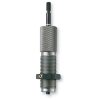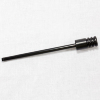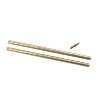mikemyers
Member
I made up a list a while ago, of everything I knew of that needs to be remembered/considered regarding reloading. I'll post it here if anyone's interested.
Some of it sounds "obvious", but for a lot of people new to reloading, I think very little of it is "obvious".
(Lots of the things I have listed were things I became aware of only after participating in this forum!)
Some of it sounds "obvious", but for a lot of people new to reloading, I think very little of it is "obvious".
(Lots of the things I have listed were things I became aware of only after participating in this forum!)






